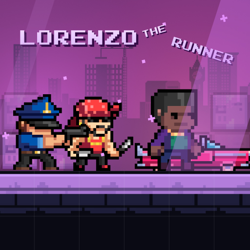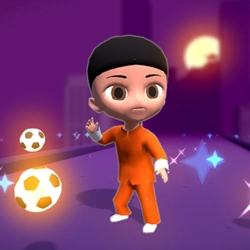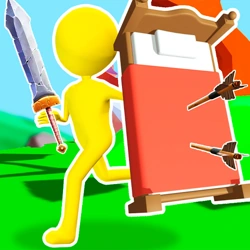Description:
Fireboy and Watergirl: Light is an adventurous puzzle game that promises to engage your senses and test your problem-solving skills. This game, much like the 'City Car Parking 3D' simulation game, provides a variety of customizations and tasks for an immersive gaming experience. However, instead of working on customizing your dream vehicle, you will be navigating through a multitude of tricky puzzles and challenges.The unique aspect of Fireboy and Watergirl: Light enables players to simultaneously control both the Fireboy and Watergirl characters. The objective? Navigate the two characters safely through a series of complex levels filled with mirrors, light beams, and other obstacles. Using the light beams and mirrors, players can solve intricate puzzles, exceed challenging obstacles, and progress through the game.
This elaborate game of Fireboy and Watergirl: Light not only demands strategic moves but also perfect timing, reminiscent of fuel and damage systems in City Car Parking 3D. Similarly, performing certain tasks in City Car Parking 3D allows one to customize their vehicle. Here, solving the intricate puzzles and navigating through the levels will ensure the progress and survival of both Fireboy and Watergirl.
Furthermore, just like City Car Parking 3D, Fireboy and Watergirl: Light is designed to feel as realistic as possible, not in the sense of driving and fuel consumption, but in the sense of crisp graphics, real-life physics, and intuitive control. The interplay of light and shadow within the game provide a visual treat, as well as a challenge to strategize your actions and advance.
Focused on strategy and the right timing, Fireboy and Watergirl: Light differs from City Car Parking 3D but is no less engaging or exciting. It's all about solving puzzles and navigating obstacles rather than focusing on driving and customizing cars. Nevertheless, the sense of achievement and satisfaction from mastering the controls and overcoming obstacles is just as valid, with the game offering an intriguing mix of fun, excitement, and challenge. Therefore, whether you're programming custom moves in City Car Parking 3D or guiding Fireboy and Watergirl safely to the end of a level, both games are immersive, requiring attention to every little detail for success.
Instructions:
You can use WASD or arrow keys to move your vehicle. When you want to accelerate your vehicle in areas where necessary, you can activate the nitro by using the F key. By using the R key, you can make your vehicle come out from where it was stuck.What are Browser Games
A browser game or a "flash game" is a video game that is played via the internet using a web browser. They are mostly free-to-play and can be single-player or multiplayer.
Some browser games are also available as mobile apps, PC games, or on consoles. For users, the advantage of the browser version is not having to install the game; the browser automatically downloads the necessary content from the game's website. However, the browser version may have fewer features or inferior graphics compared to the others, which are usually native apps.
The front end of a browser game is what runs in the user's browser. It is implemented with the standard web technologies of HTML, CSS, JavaScript, and WebAssembly. In addition, WebGL enables more sophisticated graphics. On the back end, numerous server technologies can be used.
In the past, many games were created with Adobe Flash, but they can no longer be played in the major browsers, such as Google Chrome, Safari, and Firefox due to Adobe Flash being shut down on December 31, 2020. Thousands of these games have been preserved by the Flashpoint project.
When the Internet first became widely available and initial web browsers with basic HTML support were released, the earliest browser games were similar to text-based Multi-User Dungeons (MUDs), minimizing interactions to what implemented through simple browser controls but supporting online interactions with other players through a basic client–server model.[6] One of the first known examples of a browser game was Earth 2025, first released in 1995. It featured only text but allowed players to interact and form alliances with other players of the game.



